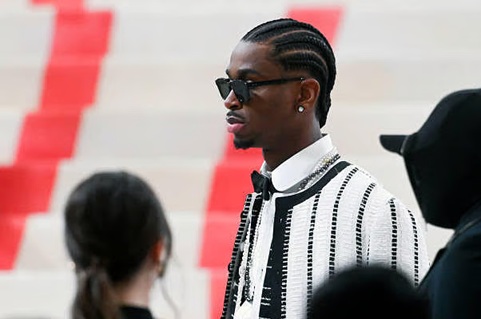Fashion as Extension of Performance
In today’s sports landscape, performance is no longer confined to the field, court, or track. It spills over into interviews, red carpets, and social media feeds. The rise of fashion-forward athletes marks a cultural shift where style is no longer a post-game afterthought but an integral part of the athlete’s identity. From tailored suits to avant-garde streetwear, these wardrobe choices communicate intent, confidence, and an acute awareness of public perception.
Social Media and the Era of Personal Branding
Social media platforms have given athletes direct control over their image. Instagram, in particular, has become a runway where style intersects with self-expression. Players curate their feeds as carefully as their training regimens. Fashion becomes an extension of their story — one that fans consume as eagerly as stats and scores. The tunnel walk, once a mundane prelude to the game, is now a high-stakes moment of visual storytelling.
Style Icons Who Play to Win
Russell Westbrook’s fearless ensembles, Lewis Hamilton’s commitment to sustainable fashion, and Serena Williams’s blend of femininity and power have turned heads for years. These athletes don’t follow trends — they create them. Their style often mirrors their game: bold, unpredictable, and unapologetically authentic. This shift has even inspired collaborations between athletes and major fashion houses, making the crossover official.
Cultural Shifts and Generational Influence
Younger generations of athletes have grown up immersed in fashion culture, often citing musicians, designers, and fellow athletes as inspirations. They view fashion not just as clothing but as creative autonomy. Leagues are responding in kind: the NBA no longer enforces a strict dress code, and FIFA embraces national uniforms that blend performance with design. As the line blurs between athlete and influencer, fashion becomes a shared language.
The Business Behind the Look
Athletes recognize the business potential of fashion. Whether launching their own clothing lines, collaborating with designers, or endorsing luxury brands, fashion has become a lucrative revenue stream. It also builds long-term relevance beyond athletic performance. For example, branding moves made by athletes like Dwyane Wade and Odell Beckham Jr. suggest that style-savvy athletes are future-proofing their careers through strategic fashion engagement.
Fashion as Cultural Commentary
Beyond aesthetics, athlete fashion often carries subtle — and sometimes overt — messages. From Colin Kaepernick’s “I Know My Rights” hoodie to Naomi Osaka’s peaceful yet powerful on-court statements, clothing has become a vehicle for protest, awareness, and advocacy. These choices resonate with global audiences and invite conversations that transcend sports.
Gender, Identity, and the New Aesthetic Norm
Fashion has also become a space to challenge gender norms and express individuality. Male athletes are embracing colors, silhouettes, and accessories once deemed off-limits, while female athletes mix traditionally masculine elements into their wardrobes. This fluidity reflects broader social changes and makes sports culture more inclusive. Even unexpected platforms like VBET have referenced these shifts subtly in their campaigns, tapping into evolving expectations around appearance and authenticity.
From Uniform to Uniqueness
Once, uniforms were the only visible marker of an athlete’s identity. Today, individuality is the hallmark of sports culture. Pre-game fits, off-season appearances, and editorial spreads now define how athletes are remembered. The shift from standard issue to personal signature has rewritten the playbook on what it means to look like a competitor.
Legacy Beyond Trophies
Style offers a different kind of legacy — one not measured in medals but in moments. Think Dennis Rodman’s technicolor hair, Allen Iverson’s cornrows, or Megan Rapinoe’s pink buzz cut. These looks are etched into cultural memory not only because they were bold, but because they told us something about the person behind the performance.
Athletes as Gatekeepers of Influence
More than just participating in trends, athletes now shape them. They influence designers, direct creative campaigns, and shift cultural conversations. What they wear influences what fans want to wear. Their sartorial decisions ripple outward, from streetwear to luxury, from endorsement deals to global influence.
What It Means for the Future of Sport
As style continues to evolve within athletics, it prompts deeper questions. What does it mean to be a modern athlete? Where is the line between competition and performance art? These questions are not distractions — they are part of the changing face of global sport. Fashion, once an external layer, is now intrinsic to the athlete’s identity and power.
Conclusion of the Movement? Not Even Close
Fashion in sports is not a phase — it’s a shift. It’s the story that begins when the buzzer sounds, the cleats come off, and the cameras keep rolling. And for fans, it’s yet another way to connect with the personalities they admire, not just for how they move — but for how they show up.


